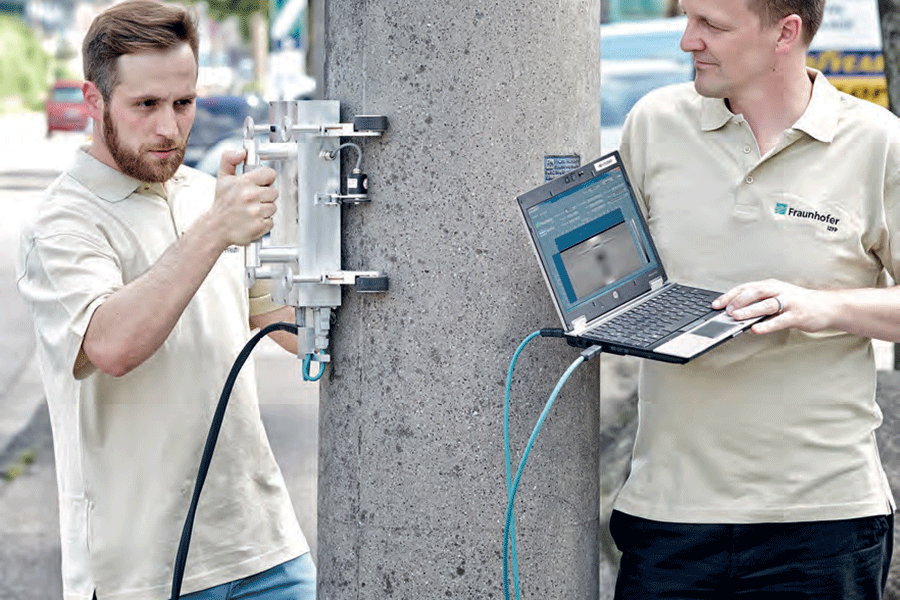|
ZWP Anlagenrevision GmbH • Südstraße 1 • 66701 Beckingen • Germany
BetoFLUXIn the transport infrastructure, prestressed concrete masts have been used extensively for decades for overhead lines for railways and trams. Due to the combination of static and dynamic loads with a partially corrosive chemical environment, ferromagnetic prestressing steels can be damaged by stress corrosion. The area most affected is on the ground where corrosion is exacerbated as a result of animal waste, road salt or electrical leakage currents
Current tests are associated with mechanical loads, which can lead to additional damage. X-ray testing is not possible without a great deal of effort to comply with radiation protection guidelines. Magnetic flux leakage testingMagnetic flux leakage testing is used to detect surface cracks in ferromagnetic materials. The method is based on the same physical effect that is also used in magnetic particle testing, which is widely used and standardized in the steel processing industry: If you apply an external magnetic field to sharp-edged gaps in the surface of a component, additional magnetic dipoles will form which cause a magnetic stray field close to the surface. This can be used to perform non-destructive failure tests on ferromagnetic prestressing steels. BetoFlux – a mobile handheld testing systemThe BetoFlux test system is a handheld device that is moved around the concrete mast in the peripheral direction. It has been developed for mobile use. A permanent magnet yoke integrated into the testing system magnetizes the prestressing steel in the concrete. The course of the magnetic field lines depends on how damaged the prestressing steel is and reveals areas that are affected by cracks. Magnetization by means of permanent magnets provides an energy-saving solution in mobile applications. Avantages
The BetoFlux research project is funded as part of the ZIM Program of the Federal Ministry of Economics and Energy (BMWi) on the basis of a resolution passed by the German Bundestag. It was developed in close cooperation with ZWP Anlagenrevision GmbH in Beckingen.
|
||
|
|


